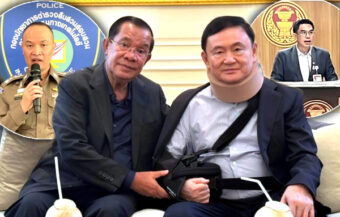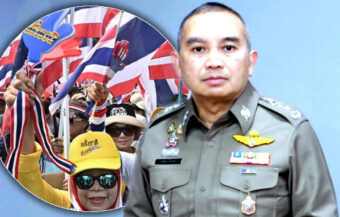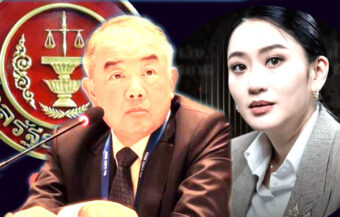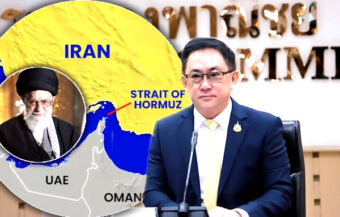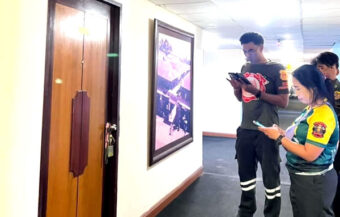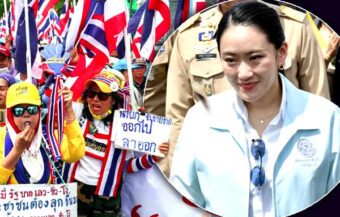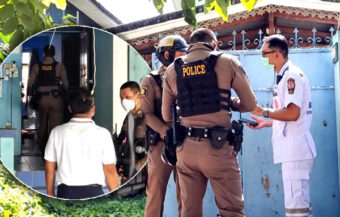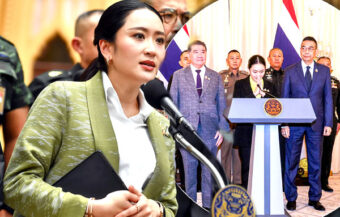Rebel militias storm Lao army outposts opposite Chiang Rai, killing five soldiers and isolating villages. Thai forces step up patrols after stray bullets hit homes. Officials fear a broader uprising linked to ethnic tensions and a massive drug trafficking group.
Thai forces in Chiang Rai, opposite the country’s border with Laos, have stepped up patrols following cross-border gunfire in the neighbouring country. Officers with Task Force 3104 remain on high alert after a rebel group—linked to ethnic Hmong fighters and drug trafficking networks—launched a sophisticated military assault on several Laotian army outposts on Sunday. At least five Lao soldiers were killed and several villages were cut off in the surprise military attack. Heavy gunfire continued throughout the day, with one stray round striking the roof of a Thai home. Authorities now fear the incident could signal the start of a broader uprising.
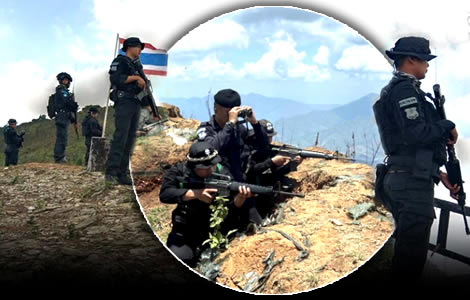
Tensions have surged along the Lao-Thai border after unidentified armed groups attacked Lao military bases in Bokeo Province. The attacks occurred opposite Wiang Kaen District in Chiang Rai and began on the evening of May 3.
At least five Lao soldiers have been confirmed dead. Several more remain wounded or trapped as the fighting stretches into its third consecutive day. Despite efforts to push back the attackers, Lao forces have not regained full control of the area.
The armed groups stormed three of four Lao outposts in Phu Pha Mon and Ban Chiang Tong, located in Pak Tha District. They moved swiftly and struck with precision. According to Lao sources, the attackers were tactically trained and heavily armed.
Rebel tactics confuse Lao reinforcements as rugged terrain and tunnel defences stall military operations
Significantly, the assailants used a multi-pronged strategy. First, a small group launched a frontal assault on one outpost. Then, when reinforcements arrived, a second group ambushed them. This tactic resulted in casualties among the Lao military, including the death of a senior officer.
Despite mobilising helicopters and armoured vehicles, Lao forces have struggled to dislodge the gunmen. Thick jungle terrain, steep hills, and numerous caves have hindered ground movement. Helicopters have only been able to carry out reconnaissance missions. Armoured vehicles cannot reach the conflict zone.
Importantly, Lao authorities report that the armed groups have dug extensive tunnel systems. These tunnels now block access to some of the occupied bases. This tactic has made reinforcement attempts extremely dangerous.
Meanwhile, a disturbing report has emerged from the frontline. A seven-year-old girl is said to be trapped inside one of the besieged bases. Her father, a Lao soldier, brought her to the site. Her mother had been away working. With food and water running low, her condition is unknown. Efforts to rescue her are ongoing.
Entire villages cut off as drug crackdown likely provokes reprisal from Hmong-linked militias
Local sources report that entire villages—such as Huay Sanan, Lam Paen, and Hat Sa—are now isolated. Supply routes have been cut off. “Civilians can’t leave, and goods can’t come in,” said one Thai border security official. “Panic is growing.”
The motive for the attack remains under investigation. However, early assessments suggest it is likely connected to a recent crackdown on narcotics. On April 28, Lao authorities seized over 20 million methamphetamine pills in Chiang Tong. Therefore, it is believed the attack is a reprisal by a transnational drug syndicate.
Intelligence officials say the gunmen may belong to Hmong ethnic militias. These groups have historic grievances with the Lao government. Some are believed to have foreign support. Notably, Lao soldiers arrested two armed men during the clashes. Both identified as Hmong and carried shotgun ammunition, pagers, and food rations.
Another three suspects were detained earlier. They admitted to fighting for an ethnic faction long active in Laos. Though their exact motives remain unclear, authorities suspect involvement in drug smuggling. Others believe the marginalisation of ethnic groups may have triggered the violence.
Thailand increases patrols and warns residents as stray bullets land on homes near the conflict zone
To contain the unrest, Thailand has stepped up security. Task Force 3104, a paramilitary unit, now patrols the border. Thai officials are especially concerned after stray bullets struck homes in Rom Fa Phu Pha Mon village. One 7.62mm round pierced a rooftop. Another landed inside a resident’s house.
Consequently, local officials issued a public safety warning. Residents near Pha Tang and Phu Chi Dao have been told to avoid unnecessary activity. “We’re closely monitoring the situation,” said Wiang Kaen District Chief Supoj Langkawira. “We’ve contacted Lao authorities, but they say it’s an internal issue.”
Nevertheless, Thai forces remain on alert. Navy patrols have also been deployed along the Mekong River. These units are tasked with preventing any spillover violence.
Throughout May 4, sporadic gunfire was heard along the Thai border opposite Wiang Kaen. Major General Kittakorn Chantra, commander of the Pha Muang Task Force, confirmed continued reports of clashes. Gunshots were recorded from areas across Tambon Por, with sounds echoing from Pha Tang to Phu Chi Fa.
Thai authorities demand Lao action after repeated cross-border bullet strikes raise civilian safety fears
Worryingly, more stray bullets have fallen on Thai territory. In one case, a bullet landed on the roof of Ms Morakot Sae Song’s home in Rom Fa Pha Mon village. It was the second such incident in two days. As a result, authorities again urged residents to stay indoors and remain vigilant.
Thai officials have taken diplomatic steps as well. Major General Chantra has formally requested cooperation from Lao counterparts in Bokeo Province. In his letter, he emphasised Thailand’s commitment to peace and border stability. He asked Lao officials to prevent further incidents that could endanger civilians.
He added, “We respect Lao sovereignty and want to maintain close cooperation. But public safety on both sides is paramount.”
The Lao military has begun to mobilise reinforcements from nearby provinces. However, operations remain difficult. The main camp is still under siege, and helicopters cannot land safely. The armed group is located just 300–400 metres from the landing zone. Any movement risks provoking renewed firefights.
Border remains tense as Lao military holds fire, fearing stray shells may spark wider regional conflict
Although clashes have quieted since last night, the situation remains tense. Lao forces have not yet launched artillery strikes, fearing stray shells might cross into Thailand. Given past incidents, such caution is seen as necessary.
Meanwhile, the Lao Ministry of Interior has ordered city governors and police chiefs to be on high alert. Village headmen have been told to monitor their areas around the clock. Authorities fear the conflict could spread to other provinces and consequently draw in more armed groups.
Underworld surrogacy trade exposed, man arrested for smuggling semen from Thailand into Laos
Amnesty calls on Laos to probe shooting of activist as family try to have him moved to Thailand
Rising World tensions and potential South China Sea Conflict being dealt with at Laos Asian Summit
Border communities remain anxious. At the same time, many residents are preparing for possible evacuation. Others are watching events unfold with growing fear.
Despite the current pause in gunfire, observers warn the situation could deteriorate rapidly. With narcotics, armed ethnic groups, and national forces involved, the border is now a flashpoint.
Join the Thai News forum, follow Thai Examiner on Facebook here
Receive all our stories as they come out on Telegram here
Follow Thai Examiner here
Further reading:
Rising World tensions and potential South China Sea conflict being dealt with at Laos Asian summit
Maris at BRICS Summit in Russia insists unaligned Thailand is friends with all despite 1954 US pact
Thai Defence Minister speaks of a ‘golden land’ seeking to act only for peace in the Indo-Pacific
China’s Embassy calls on Thai media to censor its coverage of Taiwan to protect relationships
War with China is a rising spectre that must be confronted as US General predicts conflict by 2025
Abe’s legacy will be his efforts to awaken Japan and build a defensive alliance against China


